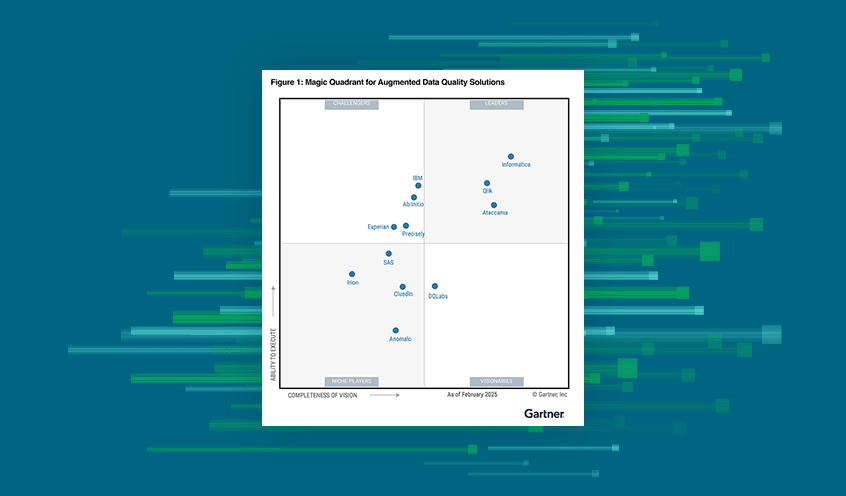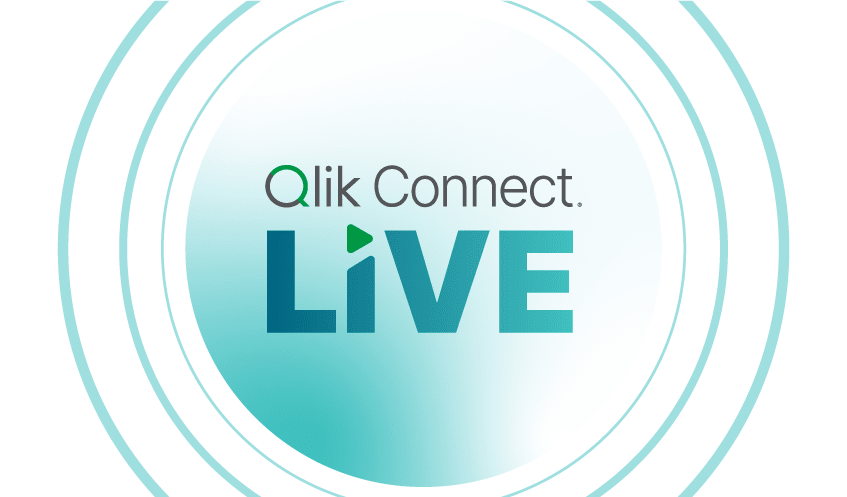Adopting AI? Risky. Not adopting AI? Riskier… It’s an interesting conundrum illustrating a broader truth: playing it safe is sometimes risky. To succeed, companies need to take smart risks—and those who do often achieve the greatest rewards.
But a risk that is smart for one organization may not be as smart for another, so what risk is right for you? In this blog, I will explore five strategic risks I think are worth your consideration - with real-life examples of companies that have successfully played that balancing act to reap the rewards and gain an unfair advantage.
Risk #1: Investing in emerging technologies
This leads me right back to AI, at it is proving very relevant and timely for many organizations today. In fact, a new IDC study sponsored by Qlik found that 49% of organizations are already investing significantly in agentic AI, while 31% are doing some initial testing before establishing a spending plan. But it is a risky undertaking: the same study found that only 12% of organizations feel ready, with data accuracy and governance and security and ethical considerations top of mind. What about the reward potential, if it’s done right? While the technology is its nascent phase, I believe it will eventually prove transformational, changing the way we make decisions. Sometimes, the path to great rewards can be a long game worth playing…
One company not adopting a wait-and-see approach with agentic AI is Deutsche Telekom. The German telecommunications company has already introduced an AI agent that allows employees to inquire about internal policies and benefits, while service staff can use it to ask about products and services. While it’s early to draw conclusions on how this investment will impact the organization, the tool has already helped enhance internal efficiency by streamlining information access and reducing the time spent on routine inquiries. And with around 10,000 employees utilizing it weekly, it should help make the workforce more AI literate as they learn what the tool does and doesn’t do well, adapt and share feedback.
A balancing act: Not every emerging technology is worth adopting. Before investing, carefully evaluate the potential benefits and strategic alignment, while assessing the level of risk you are willing to take. Consider also market readiness, scalability, regulatory compliance, and the technology's problem-solving potential to avoid costly investments in solutions that may not deliver value or could quickly become obsolete.
Risk #2: Expanding into new markets
Starbucks comes to mind for me in this scenario. I will admit I was very dubious when the company decided to expand its operations into Italy a few years ago. One of the things I enjoy the most when I visit Italy is sipping a rich espresso at a bustling, cozy café. An American-style coffee experience in Milan? I wasn’t buying it, and I wasn’t alone in my skepticism. But as it turns out, Starbucks has excelled in that market, and they have done so by adapting to the local culture. They opened upscale stores that incorporated Italian-inspired menu items like the Oleato line infused with olive oil, and emphasized cultural sensitivity. After initially opening its first store in Milan in 2018, Starbucks has continued to expand its presence in Italy: by 2022 they had 19 stores, and today they have about 40.
A balancing act: Before deciding to expand into new markets, consider market size, growth potential, competitive landscape, and cultural fit to ensure alignment with your company's core competencies and long-term goals. You can prioritize markets that offer the best combination of opportunity and strategic fit, while also leaving room for opportunities to adjust to the new market. This will allow you keep your competitive advantage while also creating some uniqueness for this new market.
Risk #3: Pivoting business direction
Dramatically changing a company's core strategy and direction, especially when current operations are stable, is undoubtedly a significant risk. But if that means recognizing market shifts and adapting accordingly, it can also lead to exponential growth and ensure future relevance.
Did you know that Slack was originally a gaming company called Tiny Speck? They developed a quirky, non-combat game called Glitch. When the game failed to attract a sufficient user base and was shut down in 2012, despite raising over $15 million, Slack's founders made a pivotal decision. They repurposed their internal collaboration tool, originally developed for use during Glitch's creation, into a standalone product for team communication. This adaptability paid off enormously as Slack became one of the fastest-growing enterprise software companies. The messaging technology's potential beyond gaming proved to be a goldmine, eventually leading to Slack's acquisition by Salesforce for $27.7 billion in 2021.
A balancing act: Pivoting business direction brings great risks not suitable for everyone. It’s important to consider factors like market demand, competitive advantage, and alignment with your team's expertise to ensure the new direction leverages your company's core strengths and long-term vision. Slack's transformation from a failed gaming company to a billion-dollar communication platform shows the potential of recognizing unexpected opportunities, but successful pivots require a balanced focus on real market needs and strategic fit, as well as situational awareness and willingness to change. Being able to identify an opportunity to pivot, and then being willing to make the pivot is essential.
Risk #4: Partnering with startups
Collaborating with startups involves risks such as integrating with untested technologies or business models and dealing with potential instability in the partner company. At the same time, these partnerships can provide access to innovative solutions, talent, and new markets, potentially leading to accelerated growth and competitive advantages.
Allen & Overy (A&O), a global law firm, made a winning motion in early 2023 by partnering with Harvey, an AI startup specializing in legal work. This collaboration allowed them to leverage AI for handling routine legal tasks, improving efficiency and reducing costs. This turned out to be a groundbreaking collaboration that significantly impacted the legal tech industry, with A&O being the first major law firm to adopt a generative AI platform at scale. Before then, the adoption of AI in large law firms was sluggish, as many saw these tools as either too risky or insufficiently sophisticated for handling complex legal tasks. This risky move paid off for A&O, helping position the firm as a leader in legal technology innovation, and setting a benchmark for other firms to leverage AI to create value.
A balancing act: Many startups fail, so how can you minimize risks when partnering with one? My advice is to thoroughly consider factors like strategic alignment and innovation potential to ensure a mutually beneficial collaboration. You will also want to assess the startup's financial health alongside its market traction and technology maturity to gauge its ability to scale and meet obligations. By focusing on partnerships that enhance your core offerings and expand your market reach while minimizing financial risks, you can maximize your chances for success.
Risk #5: Developing sustainable products
Investing in sustainable products or services can be risky due to higher production costs and uncertain consumer demand. But as environmental awareness continues to grow globally, companies that pioneer eco-friendly solutions can attract environmentally conscious consumers while establishing a competitive edge.
Patagonia, the outdoor apparel company has done this successfully by taking the bold risk of rejecting traditional consumerism and prioritizing environmental responsibility, even at the potential cost of short-term profits. They invested heavily in using recycled and organic materials, created repair and reuse programs like "Worn Wear," and maintained transparency in their supply chain to minimize environmental impact. This approach has resonated with environmentally conscious consumers, building strong brand loyalty and positioning Patagonia as a leader in sustainable business practices. Their willingness to challenge industry norms and align their operations with their values ultimately drove long-term growth, with annual sales surpassing $1 billion and the brand becoming a benchmark for ethical retail.
A balancing act: Patagonia has adopted a bold approach of doing business differently that will not be suitable to every industry or company. There is also an argument to be made for prioritizing durability to achieve sustainable goals; the French sporting goods company Decathlon is a proponent of this approach. Ultimately, consider your organization’s values and what you stand for. At the end of the day, while you may opt for a more conservative approach, it’s important to take customer expectations and market regulations in consideration in driving sustainability. At Qlik for example, we are dedicated to operating a sustainable business while helping organizations and partners across the globe tackle their and society’s biggest challenges with data.
As you assess your own balancing act between risk and reward, remember that failure to act can be as risky as taking the leap, and ultimately, the decision comes down to your willingness to embrace uncertainty and learn from potential setbacks. The question isn’t whether risks exist—they always will—but rather which strategic risks align with your goals and vision for the future. In the end, the choice is yours: what risks are you willing to take to create your unfair advantage?
In this article:
Executive Insights and Trends













































